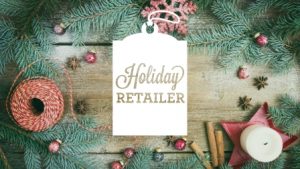The world’s largest contemporary circus deploys a composable martech stack with key components from Sitecore.
Today’s digital experience platforms are geared up to serve every kind of business, traditional or disruptive, from D2C and e-commerce to banks, engineering and construction and publishing.
How about the largest contemporary circus company in the world?

With a huge presence in Las Vegas and shows around the world, today’s Cirque du Soleil is worlds away from the small troupe of performers busking in a Quebec town almost 40 years ago.
Pierre-Luc Camirand is the circus’s director of digital customer experience. “I’m in charge of all that relates to digital, so basically I oversee everything in regard to CRM, web development, our martech project management office, as well as everything in regard to customer data.” While there are B2B elements in Le Groupe Cirque du Soleil’s business, Camirand is responsible for the individual user side of the CRM that relates to customer support.
Managing an entertainment portfolio
The need for this technology came out of an onslaught of too much complexity. “In 2017 and 2018,” said Camirand, “we went through an acquisition phase. We bought different entertainment companies like Blue Man Group; so we had to manage all these platforms. Sitecore allows us to manage a dozen platforms with a pretty small team of engineers.”
Unlike the publisher Wolters Kluwer, another Sitecore user, Cirque du Soleil wanted to preserve the individual branding of their new companies, rather than migrate them all to a central, common destination. “Each brand has its own website, but when you look in the back-end behind it, it’s the same for everyone.”
Initially, the plan was for each website to be operated separately. “We quickly realized it was way too much work, so the strategy quickly became to use the same baseline, re-use the same modules from one site to another, but keep a certain flexibility with the front-end and design.”
Cirque du Soleil used Sitecore’s technology to make this happen. Their relationship with the tech company precedes the acquisitions. “I think we started back in 2009 with Version 5,” said Camirand, “so it’s been a while.”
The key Sitecore modules
In keeping with Sitecore’s offering of composability, Cirque is using some Sitecore products and not others. “Definitely the multi-site infrastructure,” said Camirand. “We are now able to do release and deployment for all our websites at the same time. This is a huge advantage for us because it allows our development team to work faster and be more efficient.”
In 2018, building a new website could take six months; a new page or section, two or three months. “Now we talk about weeks,” said Camirand. “Also what’s really important is the multi-language capability of Sitecore, because have shows everywhere on the planet — South Korea, South America, Europe — so we need to be able to manage, I think, ten different languages.”
Marketing teams use drag-and-drop functions within the CMS to create content on their own. More complicated challenges end up with a webmaster expert.
They are not yet using the Sitecore DAM. Their vast trove of assets reside in Widen which does have the potential to connect with Sitecore (something Camirand hopes to have in place next year).
The system lets Cirque visitors to third-party ticketing platforms like Ticketmaster content from its own sites related to the shows people are looking at.
“We want to go further than that,” Camirand said, “using other sources of data; for example, if you’re looking at family packages, when you come back to cirquedusoleil.com we want to show you family content. Pushing the right content to the right person at the right moment is really key, so personalization is something we need to do.”
The international nature of the business means privacy regulation is a minefield. To tackle this, the company plans to create a CDP, not only to handle customer data from multiple sources, but consent records too. They are currently looking at several possible solutions and do not expect to use Sitecore’s CDP.
The key channels
Perhaps surprisingly, it chooses not to have a mobile app. “It’s not easy to attract people to download your app and re-use it,” Camirand said. “Most apps are not used; people use maybe 10% of the apps on their phone.”
Instead, about a year ago, they launched a platform they call the “interactive program.”
“It’s a mobile platform; a website optimized for mobile. The goal was to improve the pre-show and post-show experience of our guests.”
The program offers “fun facts” about the show, character descriptions and storylines. Unlike an app, the mobile website can’t do push notifications. However, it does allow Cirque to re-target customers elsewhere such as the main website.
That website has a blog to bridge the gap between customers and individual performers. Performers are encouraged to create content for the blog that can then be amplified on their own social media feeds. “They’re quite happy to do it because they want the exposure.”
Down the road?
On Camirand’s informal roadmap, he plans to look at Sitecore connectors going beyond Widen. “I know there’s a connector for Salesforce and Sitecore.” (Cirque is using Salesforce CRM.) “There’s probably a good way to connect both platforms together and better run our campaigns.”
The post Cirque du Soleil spotlights its digital strategy appeared first on MarTech.
(14)
Report Post





